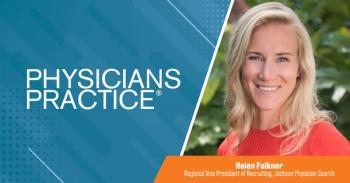
NYT Article Says PAs, NPs are Solution to Doc Shortage
An article in The New York Times said what many in medicine have known for years: PAs and NPs can be a solution to the physician shortage.
A
While I can only speak to PAs, I’m quite sure the growth of the NP profession has been in response to that age old need, as well as a logical expansion of what is known as nursing practice. History is rich with health care providers who aren’t physicians serving the needs of their communities, and the PA profession is a logical evolution and progression of that trend. I’m relying heavily on the detailed timelines found on the
This was bolstered by an address to the American Medical Association (AMA) by AMA trustee Charles Hudson, MD, where he called for what he termed a “mid-level provider” to be formed from the ranks of former military corpsmen and medics. Attempts prior to this to develop clinical nursing programs and PA programs were not successful.
In 1964, Eugene A Stead Jr., MD, petitioned Duke University to consider starting the first PA program. The next year, both the NP and PA professions began to take formation. Duke University began training 4 former Navy hospital corpsmen, and Henry K. Silver, a pediatrician, established a pediatric nurse practitioner program at the University of Colorado.
In that period of transition, many informally trained providers like PAs and NPs experienced push back that highlighted the need for enabling legislation. On the day identified at “National PA Day” in the US, the first class of formally trained PAs graduates from the Duke University PA program on Oct. 6, 1967. Since that day, the PA profession has grown rapidly, and evolved considerably, about which I have written extensively in this blog over time.
The observations in the NYT article are no surprise and nothing new. There has been a physician shortage for many decades. The Association of American Medical Colleges predicts that there will be a shortfall of 46,100 to 90,400 physicians by 2025, with a projected shortfall of 12,500 to 31,100 in family practice alone.
According to the NYT article, the U.S. has fewer practicing physicians that many comparable countries in the world. This is made worse by a system that is just not training physicians fast enough. The gist of the article, and the controversy that was made evident in the comments section, was the
This is when the fun began. The comments came in on many sides of the issue. There were a number of comments in the vein of “a PA or and NP” can never replace a physician. This despite decades of experience, and
While it did trouble me that many physicians seek to identify me as a less than optimal solution to a serious shortage of human resources in the U.S. healthcare system, I have practiced for 35 years and am use to it. What troubled me more is the lack of a better idea from my physician colleagues (at least among those commenting on this article) to deal with the very real and critical problems in the system, not the least of which are the lack of providers themselves, especially in medically underserved areas.
The reality is that PAs and NPs are an effective solution to many of the problems facing the healthcare system in American, and they can be trained more cost-effectively and faster than physicians. Speaking for PAs, I can assure my physician colleagues that I recognize the gulf in training and clinical experience between physicians and PAs, but the fact remains that PAs and NPs are well trained, efficient and effective health care providers, and well accepted by virtually all patient populations. Only working together can we make progress in solving the healthcare shortages that define our current health care system in America.
Newsletter
Optimize your practice with the Physicians Practice newsletter, offering management pearls, leadership tips, and business strategies tailored for practice administrators and physicians of any specialty.




